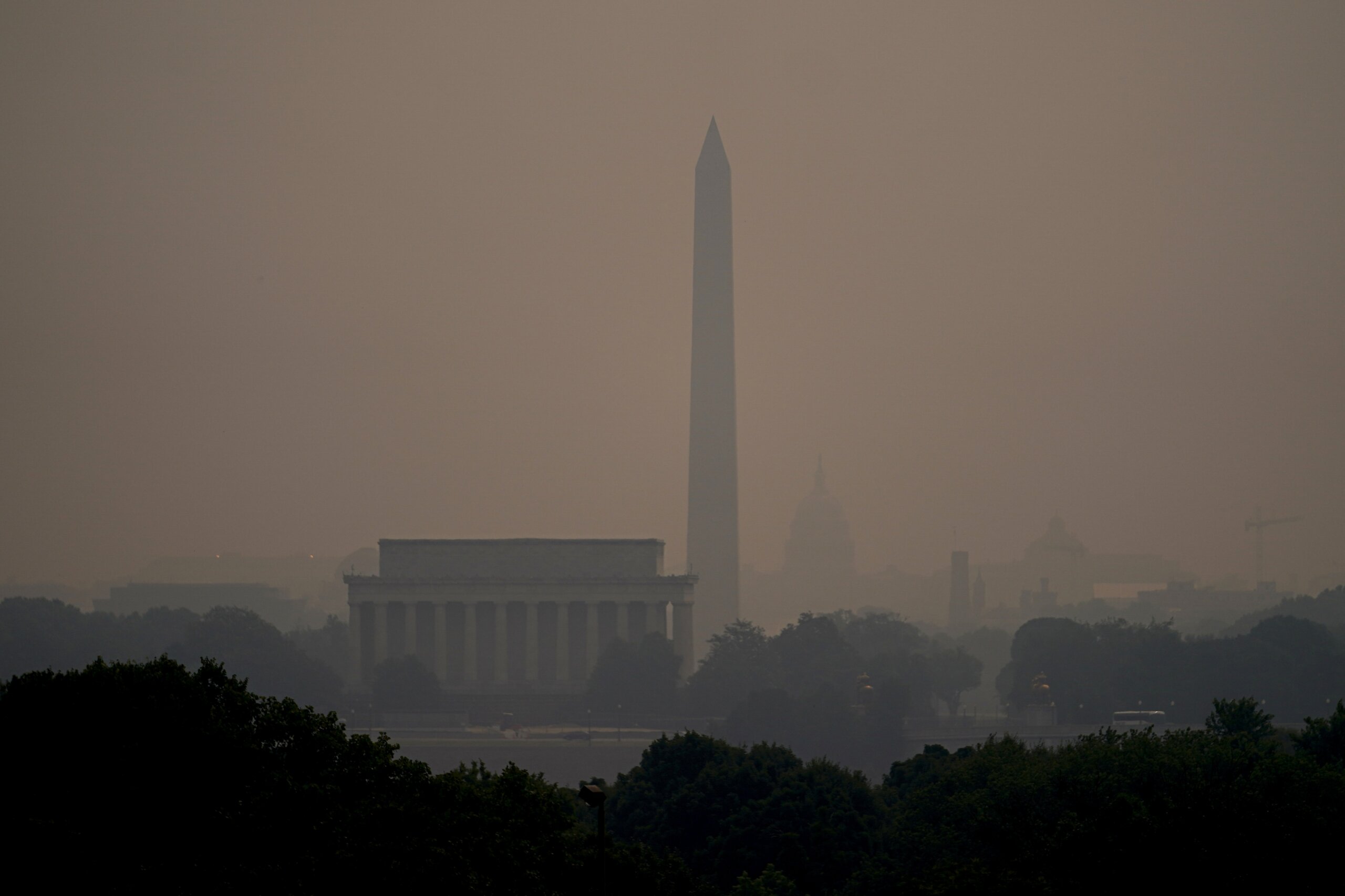
So how did this smoke get here, and can we expect more? A local scientist said they have been impacted by both local weather and broader climate trends.
“I’ve lived in Maryland, about 40 years, and this is the worst air quality from a forest fire I’ve ever seen,” University of Maryland atmospheric and oceanic scientist Russell Dickerson told WTOP.
The smoke hails from wildfires burning across the western regions of Quebec. Dickerson told WTOP that these intense fires are hot enough to create their own weather.
“The fires are so big and so hot. They generate a special kind of cloud; we call it pyrocumulus. The air, full of smoke, rises up high in the atmosphere, where it has a longer lifetime and can get caught on rivers of wind and transported to long distances,” Dickerson said.
As the sun comes up, that high-altitude smoke is brought down closer to the Earth’s surface.
“This morning, I walked out of my house and it smelled like people were barbecuing in the entire neighborhood,” Dickerson added.
The unseasonably dry weather is also likely playing a factor in this smog event. Dickerson said the dry weather in much of the Northeast “exacerbates the problem.”
“If it rained, in Quebec, or even between Quebec and us, you wouldn’t see this kind of a haze layer,” Dickerson said.
Most particulates of the soot are water-soluble, meaning they can be rained out or mixed with water vapor, preventing them from materializing near the surface as smoke.
While this event will dissipate in a few days, a warming climate means there may be more heavy smoke from wildfires.
“As the Earth gets warmer, the polar regions get warmer faster than mid-latitudes or tropical regions,” said Dickerson. “When it’s warmer and drier, we’re probably going to see more forest fires.”
Dickerson and his team at the University of Maryland have been using a small aircraft to study this smoke event.
“We will characterize the composition of that smoke. What is it? Where did it come from? What can we do about it? What are the health hazards? Those are our objectives,” he said.
What to do as the Canadian wildfire smoke moves through
“The best thing to do right now is to stay indoors,” said Dr. Rachel Schreiber, an allergist with a practice in Rockville, Maryland
According to the U.S. Air Quality Index website, there is currently poor air quality in the D.C. region, with parts of the area seeing air quality that is classified either as “unhealthy” or “unhealthy for sensitive groups.”
“We really do worry more about patients who have chronic diseases like asthma, COPD, cardiac disease, (and) pregnant women,” Schreiber said.
Schreiber said with the current air quality, anyone with respiratory issues should also have any medicine on hand that they might need, including inhalers.
Common symptoms smoke can cause include sore throat, irritated eyes or sinuses, as well as lower respiratory issues, such as coughing, wheezing and shortness of breath.
Schreiber said she is getting a lot of calls about whether masks will help, and the answer is, “It depends.”
If you have a surgical mask, those will not stop the smoke, but N95 masks on the other hand, can stop the small particles from getting into your lungs.
“We want to protect your airways. We want to protect that particulate matter from getting in your airways and potentially even getting into your bloodstream,” Schreiber said.
Schreiber said for those who exercise, they should opt for indoor workouts for now because you you take in more air when working out, which not only causes lungs to expand, but could also result in more of the bad particles being breathed in.
Finally, for pet owners, Schreiber said it is also affecting your pets. So, keep the walks short until things clear up.









